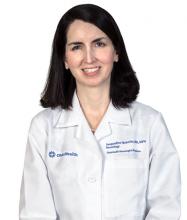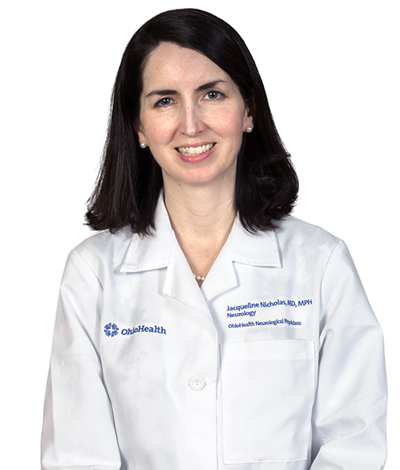User login
The finding comes from a retrospective analysis of claims data presented at the meeting held by the Americas Committee for Treatment and Research in Multiple Sclerosis. “This rate of DMD treatment merits further exploration given that evidence suggests the importance of early DMD treatment initiation in patients with a confirmed diagnosis of relapsing forms of MS to help optimize the benefits of treatment,” Amy L. Phillips, PharmD, a study author, said in an interview in advance of the meeting.
Little is known about current DMD treatment patterns in U.S. patients with multiple sclerosis following an increase in the number of available DMDs in recent years, according to Dr. Phillips of the department of health economics and outcomes research at EMD Serono.
“Most previous studies have focused on self-injectable DMDs or self-injectable and infusion DMDs,” she said. “Information about the treatment patterns including oral DMDs is scarce, particularly in large population samples. The objective of our study was to describe treatment patterns and sequences of therapy among U.S. patients with MS newly initiating DMD treatment between Jan. 1, 2011 and June 30, 2015.”
Dr. Phillips, lead study author Jacqueline A. Nicholas, MD, MPH, of the OhioHealth Multiple Sclerosis Center, and their colleagues used data from the IQVIA RWD Adjudicated Claims database to identify patients who had at least two medical claims with a MS diagnosis and at least one DMD claim during the study period. Other eligibility criteria included continuous eligibility with commercial insurance 1 year before (baseline period) and 2 years after (follow-up period) initiation of the DMD, no evidence of DMD use during the baseline period, and being aged between 18 and 63 years.
Of 63,946 diagnostically eligible patients, 36,175 (57%) had a claim for a DMD. The researchers reported findings from 8,251 patients who met all of the eligibility criteria. Their mean age was 43 years, 76% were female, and the mean number of DMDs over 2 years among newly treated patients was 1.27.
The most common first-line DMD therapy was glatiramer acetate (GA, 38%), followed by intramuscular interferon beta (IM IFNb-1a, 14%), subcutaneous interferon beta (SC IFNb-1a, 14%), dimethyl fumarate (DMF, 14%), and fingolimod (9%). DMF was the most common second-line therapy (36%), followed by fingolimod (17%), GA (17%), SC IFNb-1a (8%), and IM IFNb-1a (7%).
“Numerous DMD treatment patterns observed in this study highlight the diverse patient and treatment needs,” Dr. Phillips said. “DMD treatment patterns in MS vary due to the heterogeneity of the disease, physician preferences, and patient needs and treatment goals. Patient-centered care and shared decision making has been shown to improve patient satisfaction and to encourage treatment adherence in MS.”
She acknowledged certain limitations of the study, including the fact that the analysis presents only the most common DMD treatment sequences observed in this patient population.
“Future analyses might examine less common DMD treatment sequences,” she said. “Also, more research is needed to understand how DMD treatment patterns and sequences change over time, and the factors that may be associated with DMD switching and treatment discontinuation.”
She also noted that the administrative claims data studied represent mostly patients with commercial health insurance, limiting the generalizability of the findings. Further, ICD-9 and ICD-10 codes do not distinguish between MS types.
Funding for the study was provided by EMD Serono, the biopharmaceutical business of Merck KGaA, Darmstadt, Germany, in the United States and Canada. Dr. Phillips is an employee of the company.
SOURCE: Phillips A et al. ACTRIMS FORUM 2019, Abstract 001.
The finding comes from a retrospective analysis of claims data presented at the meeting held by the Americas Committee for Treatment and Research in Multiple Sclerosis. “This rate of DMD treatment merits further exploration given that evidence suggests the importance of early DMD treatment initiation in patients with a confirmed diagnosis of relapsing forms of MS to help optimize the benefits of treatment,” Amy L. Phillips, PharmD, a study author, said in an interview in advance of the meeting.
Little is known about current DMD treatment patterns in U.S. patients with multiple sclerosis following an increase in the number of available DMDs in recent years, according to Dr. Phillips of the department of health economics and outcomes research at EMD Serono.
“Most previous studies have focused on self-injectable DMDs or self-injectable and infusion DMDs,” she said. “Information about the treatment patterns including oral DMDs is scarce, particularly in large population samples. The objective of our study was to describe treatment patterns and sequences of therapy among U.S. patients with MS newly initiating DMD treatment between Jan. 1, 2011 and June 30, 2015.”
Dr. Phillips, lead study author Jacqueline A. Nicholas, MD, MPH, of the OhioHealth Multiple Sclerosis Center, and their colleagues used data from the IQVIA RWD Adjudicated Claims database to identify patients who had at least two medical claims with a MS diagnosis and at least one DMD claim during the study period. Other eligibility criteria included continuous eligibility with commercial insurance 1 year before (baseline period) and 2 years after (follow-up period) initiation of the DMD, no evidence of DMD use during the baseline period, and being aged between 18 and 63 years.
Of 63,946 diagnostically eligible patients, 36,175 (57%) had a claim for a DMD. The researchers reported findings from 8,251 patients who met all of the eligibility criteria. Their mean age was 43 years, 76% were female, and the mean number of DMDs over 2 years among newly treated patients was 1.27.
The most common first-line DMD therapy was glatiramer acetate (GA, 38%), followed by intramuscular interferon beta (IM IFNb-1a, 14%), subcutaneous interferon beta (SC IFNb-1a, 14%), dimethyl fumarate (DMF, 14%), and fingolimod (9%). DMF was the most common second-line therapy (36%), followed by fingolimod (17%), GA (17%), SC IFNb-1a (8%), and IM IFNb-1a (7%).
“Numerous DMD treatment patterns observed in this study highlight the diverse patient and treatment needs,” Dr. Phillips said. “DMD treatment patterns in MS vary due to the heterogeneity of the disease, physician preferences, and patient needs and treatment goals. Patient-centered care and shared decision making has been shown to improve patient satisfaction and to encourage treatment adherence in MS.”
She acknowledged certain limitations of the study, including the fact that the analysis presents only the most common DMD treatment sequences observed in this patient population.
“Future analyses might examine less common DMD treatment sequences,” she said. “Also, more research is needed to understand how DMD treatment patterns and sequences change over time, and the factors that may be associated with DMD switching and treatment discontinuation.”
She also noted that the administrative claims data studied represent mostly patients with commercial health insurance, limiting the generalizability of the findings. Further, ICD-9 and ICD-10 codes do not distinguish between MS types.
Funding for the study was provided by EMD Serono, the biopharmaceutical business of Merck KGaA, Darmstadt, Germany, in the United States and Canada. Dr. Phillips is an employee of the company.
SOURCE: Phillips A et al. ACTRIMS FORUM 2019, Abstract 001.
The finding comes from a retrospective analysis of claims data presented at the meeting held by the Americas Committee for Treatment and Research in Multiple Sclerosis. “This rate of DMD treatment merits further exploration given that evidence suggests the importance of early DMD treatment initiation in patients with a confirmed diagnosis of relapsing forms of MS to help optimize the benefits of treatment,” Amy L. Phillips, PharmD, a study author, said in an interview in advance of the meeting.
Little is known about current DMD treatment patterns in U.S. patients with multiple sclerosis following an increase in the number of available DMDs in recent years, according to Dr. Phillips of the department of health economics and outcomes research at EMD Serono.
“Most previous studies have focused on self-injectable DMDs or self-injectable and infusion DMDs,” she said. “Information about the treatment patterns including oral DMDs is scarce, particularly in large population samples. The objective of our study was to describe treatment patterns and sequences of therapy among U.S. patients with MS newly initiating DMD treatment between Jan. 1, 2011 and June 30, 2015.”
Dr. Phillips, lead study author Jacqueline A. Nicholas, MD, MPH, of the OhioHealth Multiple Sclerosis Center, and their colleagues used data from the IQVIA RWD Adjudicated Claims database to identify patients who had at least two medical claims with a MS diagnosis and at least one DMD claim during the study period. Other eligibility criteria included continuous eligibility with commercial insurance 1 year before (baseline period) and 2 years after (follow-up period) initiation of the DMD, no evidence of DMD use during the baseline period, and being aged between 18 and 63 years.
Of 63,946 diagnostically eligible patients, 36,175 (57%) had a claim for a DMD. The researchers reported findings from 8,251 patients who met all of the eligibility criteria. Their mean age was 43 years, 76% were female, and the mean number of DMDs over 2 years among newly treated patients was 1.27.
The most common first-line DMD therapy was glatiramer acetate (GA, 38%), followed by intramuscular interferon beta (IM IFNb-1a, 14%), subcutaneous interferon beta (SC IFNb-1a, 14%), dimethyl fumarate (DMF, 14%), and fingolimod (9%). DMF was the most common second-line therapy (36%), followed by fingolimod (17%), GA (17%), SC IFNb-1a (8%), and IM IFNb-1a (7%).
“Numerous DMD treatment patterns observed in this study highlight the diverse patient and treatment needs,” Dr. Phillips said. “DMD treatment patterns in MS vary due to the heterogeneity of the disease, physician preferences, and patient needs and treatment goals. Patient-centered care and shared decision making has been shown to improve patient satisfaction and to encourage treatment adherence in MS.”
She acknowledged certain limitations of the study, including the fact that the analysis presents only the most common DMD treatment sequences observed in this patient population.
“Future analyses might examine less common DMD treatment sequences,” she said. “Also, more research is needed to understand how DMD treatment patterns and sequences change over time, and the factors that may be associated with DMD switching and treatment discontinuation.”
She also noted that the administrative claims data studied represent mostly patients with commercial health insurance, limiting the generalizability of the findings. Further, ICD-9 and ICD-10 codes do not distinguish between MS types.
Funding for the study was provided by EMD Serono, the biopharmaceutical business of Merck KGaA, Darmstadt, Germany, in the United States and Canada. Dr. Phillips is an employee of the company.
SOURCE: Phillips A et al. ACTRIMS FORUM 2019, Abstract 001.
REPORTING FROM ACTRIMS FORUM 2019

